 W
WThe occupation of the Baltic states involved the military occupation of the three Baltic states—Estonia, Latvia and Lithuania—by the Soviet Union under the auspices of the 1939 Molotov–Ribbentrop Pact in June 1940. They were then annexed into the Soviet Union as constituent republics in August 1940, though most Western powers and nations never recognised their incorporation. On 22 June 1941, Nazi Germany attacked the Soviet Union and within weeks occupied the Baltic territories. In July 1941, the Third Reich incorporated the Baltic territory into its Reichskommissariat Ostland. As a result of the Red Army's Baltic Offensive of 1944, the Soviet Union recaptured most of the Baltic states and trapped the remaining German forces in the Courland pocket until their formal surrender in May 1945. The Soviet "annexation occupation" or occupation sui generis of the Baltic states lasted until August 1991, when the three countries regained their independence.
 W
WThe occupation of Latvia by Nazi Germany was completed on July 10, 1941 by Germany's armed forces. Latvia became a part of Nazi Germany's Reichskommissariat Ostland—the Province General of Latvia. Anyone not racially acceptable or who opposed the German occupation, as well as those who had cooperated with the Soviet Union, were killed or sent to concentration camps in accordance with the Nazi Generalplan Ost.
 W
WKarl-Siegmund Litzmann was General Commissioner for Estonia in the Reichskommissariat Ostland during the German occupation..
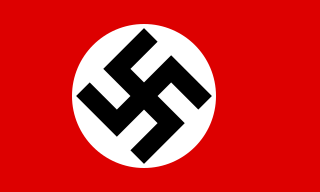 W
WThe Reichskommissariat Ostland (RKO) was established by Nazi Germany in 1941 during World War II. It became the civilian occupation regime in the Baltic states and the western part of the Byelorussian Soviet Socialist Republic. German planning documents initially referred to an equivalent Reichskommissariat Baltenland. The political organization for this territory – after an initial period of military administration before its establishment – involved a German civilian administration, nominally under the authority of the Reich Ministry for the Occupied Eastern Territories led by Nazi ideologist Alfred Rosenberg, but actually controlled by the Nazi official Hinrich Lohse, its appointed Reichskommissar.
 W
WThe Soviet Union issued an ultimatum to Lithuania before midnight of June 14, 1940. The Soviets, using a formal pretext, demanded that an unspecified number of Soviet soldiers be allowed to enter the Lithuanian territory and that a new pro-Soviet government be formed. The ultimatum and subsequent incorporation of Lithuania into the Soviet Union stemmed from the division of Eastern Europe into the German and Soviet spheres of influence agreed in the Molotov–Ribbentrop Pact of August 1939. Lithuania, along with Latvia and Estonia, fell into the Soviet sphere. According to the Soviet–Lithuanian Mutual Assistance Treaty of October 1939, Lithuania agreed to allow some 20,000 Soviets troops to be stationed at bases within Lithuania in exchange for receiving a portion of the Vilnius Region. Further Soviet actions to establish its dominance in its sphere of influence were delayed by the Winter War with Finland and resumed in spring 1940 when Germany was making rapid advances in western Europe. Despite the threat to the country's independence, Lithuanian authorities did little to plan for contingencies and were unprepared for the ultimatum.
 W
WThe background of the occupation of the Baltic states covers the period before the first Soviet occupation on 14 June 1940, stretching from independence in 1918 to the Soviet ultimatums in 1939–1940. The Baltic states gained their independence during and after the Russian revolutions of 1917; Lenin's government allowed them to secede. They managed to sign non-aggression treaties in the 1920s and 1930s. Despite the treaties, the Baltic states were forcibly incorporated into the Soviet Union in 1940 in the aftermath of the German–Soviet pact of 1939.
 W
WThe Baltic Legations were the missions of the exiled Baltic diplomatic services from 1940 to 1991. After the Soviet occupation of the Baltic states in 1940, the Baltic states instructed their diplomats to maintain their countries' legations in several Western capitals. Members of the Estonian diplomatic service, the Latvian diplomatic service and the Lithuanian diplomatic service continued to be recognised as the diplomatic representatives of the independent pre-World War II states of Estonia, Latvia and Lithuania, whose annexation by the Soviet Union was not recognised by the United States, the United Kingdom, or France. The legations provided consular services to exiled citizens of the Baltic states from 1940 to 1991.
 W
WThe Baltic Offensive, also known as the Baltic Strategic Offensive, denotes the campaign between the northern Fronts of the Red Army and the German Army Group North in the Baltic States during the autumn of 1944. The result of the series of battles was the isolation and encirclement of the Army Group North in the Courland Pocket and Soviet re-occupation of the Baltic States.
 W
WThis Baltic states were under Soviet rule from the end of World War II in 1945, from Sovietization onwards until independence was regained in 1991. The Baltic states were occupied and annexed, becoming the Soviet socialist republics of Estonia, Latvia and Lithuania. After their annexation by Nazi Germany, the USSR reoccupied the Baltic territories in 1944 and maintained control there until the Baltic states regained their independence nearly 50 years later in the aftermath of the Soviet coup of 1991.
 W
WRelevant events began regarding the Baltic states and the Soviet Union when, following Bolshevist Russia's conflict with the Baltic states—Lithuania, Latvia and Estonia—several peace treaties were signed with Russia and its successor, the Soviet Union. In the late 1920s and early 1930s, the Soviet Union and all three Baltic States further signed non-aggression treaties. The Soviet Union also confirmed that it would adhere to the Kellogg–Briand Pact with regard to its neighbors, including Estonia and Latvia, and entered into a convention defining "aggression" that included all three Baltic countries.
 W
WThe Estonian government-in-exile was the formally declared governmental authority of the Republic of Estonia in exile, existing from 1944 until the reestablishment of Estonian sovereignty over Estonian territory in 1991–92. It traced its legitimacy through constitutional succession to the last Estonian government in power prior to the Soviet invasion of 1940. During its existence, it was the internationally recognized government of Estonia.
 W
WThe Estonian Soviet Socialist Republic was a republic of the Soviet Union. The ESSR was initially established on the territory of the Republic of Estonia on 21 July 1940, following the occupation of Soviet troops on 17 June 1940 and the installation of a communist government backed by the Soviet Union, which declared Estonia a Soviet constituency. Estonia was subsequently incorporated into the Soviet Union as a Soviet Republic on 6 August 1940. The territory was occupied by Nazi Germany in 1941 and administered as a part of Reichskommissariat Ostland until it was liberated by the Soviet Union in 1944 during World War II.
 W
WExecutive Order 8389 Protecting Funds of Victims of Aggression was issued by U.S. President Franklin D. Roosevelt on April 10, 1940, following the invasions of Denmark and Norway by Nazi Germany.
 W
WThe Finnish Democratic Republic, also known as the Terijoki Government, was a short-lived puppet state of the Soviet Union in Finland from December 1939 to March 1940.
 W
WFinnish–Estonian defence co-operation began in 1930 with a secret military pact between Finland and Estonia against the threat of the Soviet Union. Open co-operation ended in 1939, as the Soviets pressured the Estonian government, but it continued secretly with information-sharing during the Winter War.
 W
WThe Forest Brothers were Baltic and Estonian partisans who waged guerrilla warfare against Soviet rule during the Soviet invasion and occupation of the three Baltic states during, and after, World War II. Similar anti-Soviet Central and Eastern European resistance groups fought against Soviet and communist rule in Bulgaria, Poland, Romania, and western Ukraine.
 W
WAfter Nazi Germany invaded the Soviet Union on June 22, 1941, Army Group North reached Estonia in July. Initially the Germans were perceived by most Estonians as liberators from the USSR and its repressions, having arrived only a week after the first mass deportations from the Baltic States. Although hopes were raised for the restoration of the country's independence, it was soon realized that they were but another occupying power. The Germans pillaged the country for their war effort and unleashed The Holocaust in Estonia during which they and their collaborators murdered tens of thousands of people. For the duration of the occupation, Estonia was incorporated into the German province of Ostland.
 W
WThe occupation of Lithuania by Nazi Germany lasted from the German invasion of the Soviet Union on June 22, 1941 to the end of the Battle of Memel on January 28, 1945. At first the Germans were welcomed as liberators from the repressive Soviet regime which occupied Lithuania prior to the German arrival. In hopes of re-establishing independence or regaining some autonomy, Lithuanians organized their Provisional Government. Soon the Lithuanian attitudes towards the Germans changed into passive resistance.
 W
WThe Guerrilla war in the Baltic states or the Forest Brothers resistance movement was the armed struggle against Soviet rule that spanned from 1940 to the mid-1950s. After the occupation of the Baltic territories by the Soviets in 1944, an insurgency started. According to some estimates, 10,000 partisans in Estonia, 10,000 partisans in Latvia and 30,000 partisans in Lithuania and many more supporters were involved. This war continued as an organised struggle until 1956 when the superiority of the Soviet military caused the native population to adopt other forms of resistance. The guerrilla movement in the post-war Baltic states was of a size proportionately similar to that of the Viet Cong in South Vietnam.
 W
WThe Holocaust in Lithuania resulted in the near total destruction of Lithuanian (Litvaks) and Polish Jews, living in Generalbezirk Litauen of Reichskommissariat Ostland within the Nazi-controlled Lithuanian SSR. Out of approximately 208,000–210,000 Jews, an estimated 190,000–195,000 were murdered before the end of World War II, most between June and December 1941. More than 95% of Lithuania's Jewish population was massacred over the three-year German occupation—a more complete destruction than befell any other country affected by the Holocaust. Historians attribute this to the massive collaboration in the genocide by the non-Jewish local paramilitaries, though the reasons for this collaboration are still debated. The Holocaust resulted in the largest-ever loss of life in so short a period of time in the history of Lithuania.
 W
WThe Latvian diplomatic service in exile was the only governmental body of the Republic of Latvia which continued its activities during the Nazi and Soviet occupation of Latvia during 1940–1991. Latvian diplomats who were stationed in embassies and consulates at the moment of the occupation in 1940, refused to recognize the occupation and return to Soviet Latvia. They continued to formally represent the interests of Latvia in countries that did not recognize the Soviet annexation. After the restoration of Latvian independence in 1991, the diplomats started reporting to the restored Latvian Ministry of Foreign Affairs.
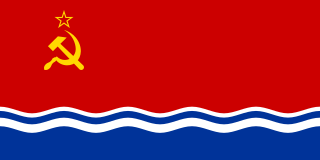 W
WThe Latvian Soviet Socialist Republic, also known as Soviet Latvia or Latvia, was a republic of the Soviet Union.
 W
WThe Lithuanian Soviet Socialist Republic, also known as Soviet Lithuania or Lithuania, was one of the constituent republics of the USSR between 1940–1941 and 1944–1990. After 1946, its territory and borders mirrored those of today's Republic of Lithuania, with the exception of minor adjustments of the border with Belarus.
 W
WAleksandr Dmitrievich Loktionov – 28 October 1941) was a Soviet general.
 W
WThe Molotov–Ribbentrop Pact was a non-aggression pact between Nazi Germany and the Soviet Union that enabled those two powers to partition Poland between them. The pact was signed in Moscow on 23 August 1939 by German Foreign Minister Joachim von Ribbentrop and Soviet Foreign Minister Vyacheslav Molotov and was officially known as the Treaty of Non-Aggression between Germany and the Union of Soviet Socialist Republics.
 W
WThe NKVD prisoner massacres were a series of mass executions of political prisoners carried out by the NKVD, the People's Commissariat for Internal Affairs of the Soviet Union, across Eastern Europe, primarily Poland, Ukraine, the Baltic states, and Bessarabia. After the start of the German invasion of the Soviet Union on June 22, 1941, the NKVD troops were supposed to evacuate political prisoners into the interior of the Soviet Union, but the hasty retreat of the Red Army, the lack of transportation and other supplies and the general disregard for legal procedures often meant that the prisoners were executed.
 W
WThe Soviet occupation of the Baltic states covers the period from the Soviet–Baltic mutual assistance pacts in 1939, to their invasion and annexation in 1940, to the mass deportations of 1941.
 W
WThe Soviet Union occupied most of the territory of the Baltic states in its 1944 Baltic Offensive during World War II. The Red Army regained control over the three Baltic capitals and encircled retreating Wehrmacht and Latvian forces in the Courland Pocket where they held out until the final German surrender at the end of the war. The German forces were deported and the leaders of Latvian collaborating forces were executed as traitors. After the war, the Baltic territories were reorganized into constituent republics of the USSR until they declared independence in 1990 amid the collapse of the Soviet Union.
 W
WThe occupation of the Baltic states by Nazi Germany occurred during Operation Barbarossa from 1941 to 1944. Initially, many Estonians, Latvians, and Lithuanians considered the Germans as liberators from the Soviet Union.
 W
WThe Omakaitse was a militia organisation in Estonia. It was founded in 1917 following the Russian Revolution. On the eve of the Occupation of Estonia by the German Empire the Omakaitse units took over major towns in the country allowing the Salvation Committee of the Estonian Provincial Assembly to proclaim the independence of Estonia. After the German Occupation the Omakaitse became outlawed.
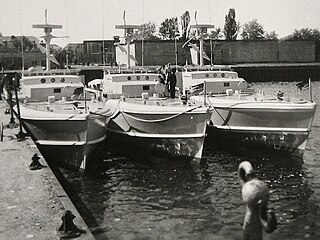 W
WOperation Jungle was a program by the British Secret Intelligence Service (MI6) early in the Cold War from 1948 to 1955 for the clandestine insertion of intelligence and resistance agents into Poland and the Baltic states. The agents were mostly Polish, Estonian, Latvian and Lithuanian exiles who had been trained in the United Kingdom and Sweden and were to link up with the anti-Soviet resistance against the communist governments. The naval operations of the program were carried out by German crew-members of the German Mine Sweeping Administration under the control of the Royal Navy. The American-sponsored Gehlen Organization also got involved in the draft of agents from Eastern Europe. However, the KGB penetrated the network and captured or turned most of the agents.
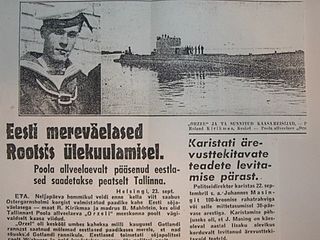 W
WThe Orzeł incident occurred at the beginning of World War II. The Polish submarine ORP Orzeł escaped from Tallinn in then-neutral Estonia to the United Kingdom. The Soviet Union used the incident as a pretext to justify the eventual occupation of Estonia.
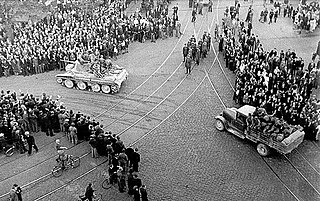 W
WThe Soviet occupation of Latvia in 1940 refers to the military occupation of the Republic of Latvia by the Soviet Union under the provisions of the 1939 Molotov–Ribbentrop Pact with Nazi Germany and its Secret Additional Protocol signed in August 1939. The occupation took place according to the European Court of Human Rights, the Government of Latvia, the United States Department of State, and the European Union. In 1989, the USSR also condemned the 1939 secret protocol between Nazi Germany and herself that had led to the invasion and occupation of the three Baltic countries, including Latvia.
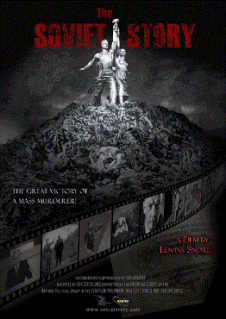 W
WThe Soviet Story is a 2008 documentary film about Soviet communism and Soviet–German collaboration before 1941 written and directed by Edvīns Šnore and sponsored by the Union for Europe of the Nations group in the European Parliament.
 W
WThe Soviet–Estonian Mutual Assistance Treaty, also known as the Bases Treaty was a bilateral treaty signed in Moscow on 28 September 1939. The treaty obliged both parties to respect each other's sovereignty and independence, and allowed the Soviet government to establish military bases in Estonia. These bases facilitated the Soviet takeover of the country in June 1940.
 W
WThe Soviet–Latvian Mutual Assistance Treaty was a bilateral treaty signed in Moscow on October 5, 1939. The treaty obliged both parties to respect each other's sovereignty and independence, while in practice allowed the Soviet government to establish military bases in Latvia, which facilitated the Soviet invasion of that country in June 1940.
 W
WThe Soviet–Lithuanian Mutual Assistance Treaty was a bilateral treaty signed between the Soviet Union and Lithuania on October 10, 1939. According to provisions outlined in the treaty, Lithuania would acquire about one fifth of the Vilnius Region, including Lithuania's historical capital, Vilnius, and in exchange would allow five Soviet military bases with 20,000 troops to be established across Lithuania. In essence the treaty with Lithuania was very similar to the treaties that the Soviet Union signed with Estonia on September 28, and with Latvia on October 5. According to official Soviet sources, the Soviet military was strengthening the defenses of a weak nation against possible attacks by Nazi Germany. The treaty provided that Lithuania's sovereignty would not be affected. However, in reality the treaty opened the door for the first Soviet occupation of Lithuania and was described by The New York Times as "virtual sacrifice of independence."
 W
WState continuity of the Baltic states describes the continuity of the Baltic states as legal entities under international law while under Soviet rule and German occupation from 1940 to 1991. The prevailing opinion accepts the Baltic thesis of illegal occupation and the actions of the USSR are regarded as contrary to international law in general and to the bilateral treaties between the USSR and the Baltic states in particular.
 W
WSemyon Konstantinovich Timoshenko was a Soviet military commander and Marshal of the Soviet Union.
 W
WThe Welles Declaration was a diplomatic statement issued on July 23, 1940, by Sumner Welles, the United States' acting Secretary of State, condemning the June 1940 occupation by the Soviet Union of the three Baltic states of Estonia, Latvia and Lithuania, and refusing to recognize their annexation as Soviet Republics. It was an application of the 1932 Stimson Doctrine of non-recognition of international territorial changes that were executed by force. It was consistent with U.S. President Franklin D. Roosevelt's attitude towards territorial expansion.
 W
WWorld Without Nazism (WWN), or Mir Bez Natsizma (MBN), is a Russian political organization with ties to Vladimir Putin's government, which claims to campaign against "neo-fascism." The group has also been described, by security agencies from the Baltic republics, as a Russian propaganda organization, and as a Kremlin-sponsored GONGO, which aims to advance Russian foreign policies against formerly Soviet-occupied countries and to promote "a Soviet-era approach to World War II". The organization was founded and is led by Boris Spiegel, a Russian oligarch with close ties to Putin. It was founded in Kyiv, Ukraine, on 22 June 2010, and is registered in Strasbourg, France.